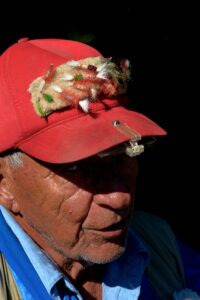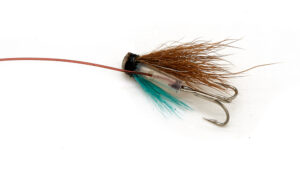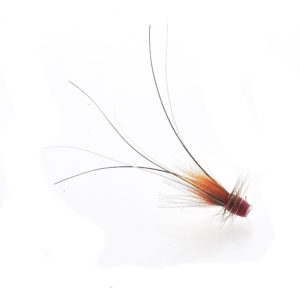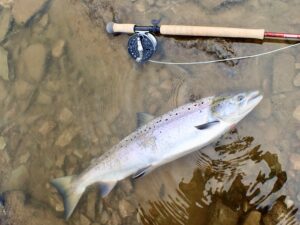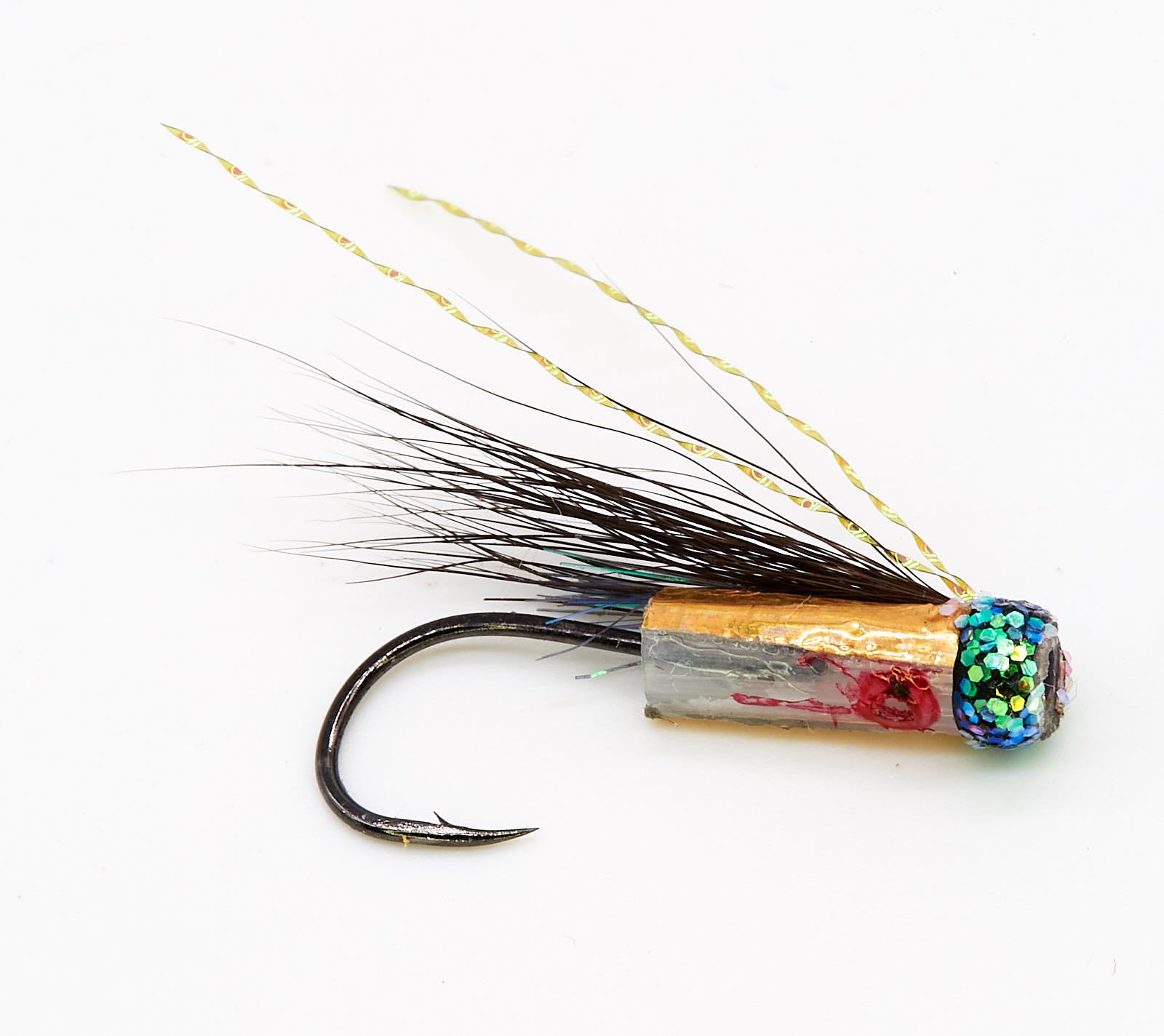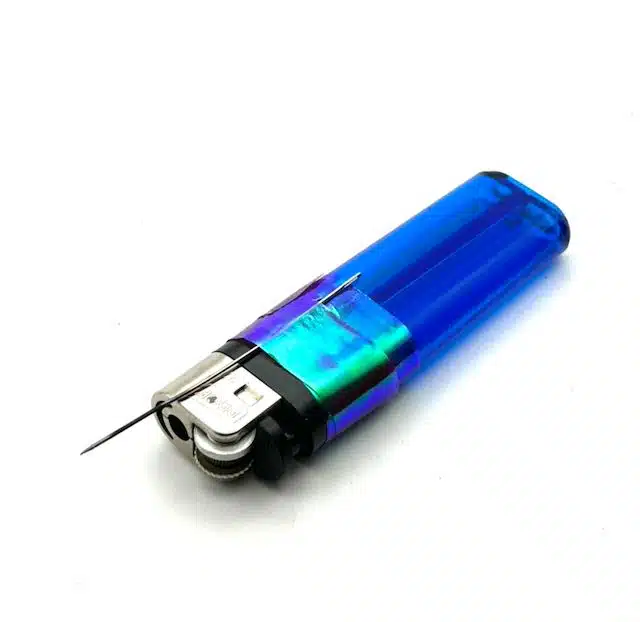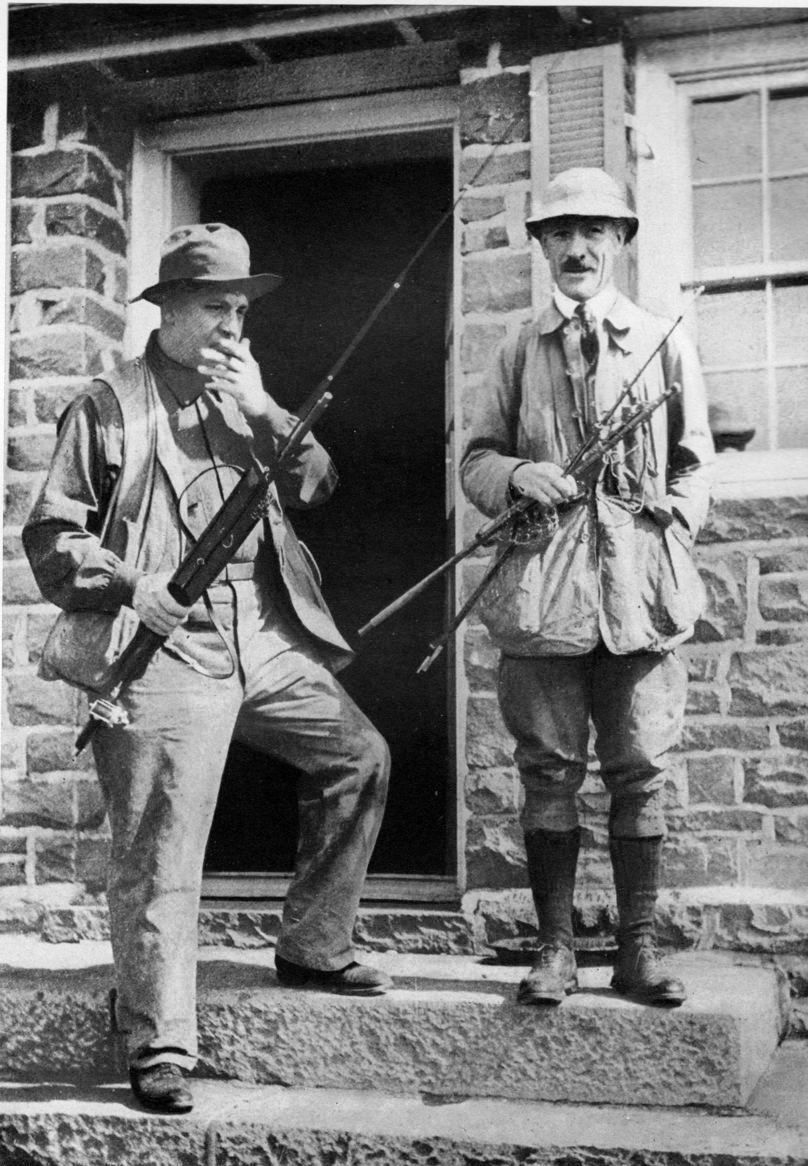Before You Start Tying Riffling Hitch Tube Flies: A Handy Tool for the Job Before…
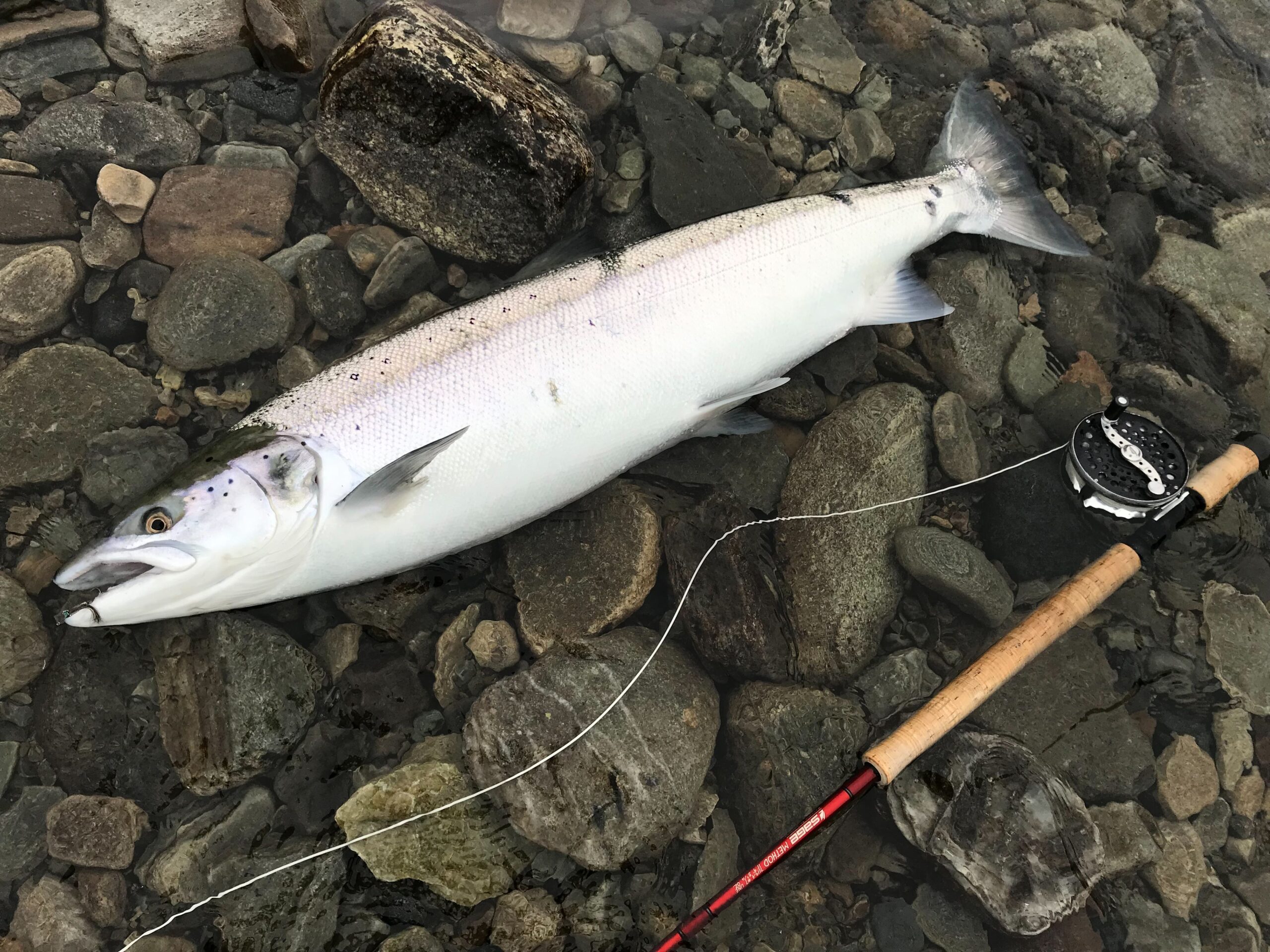
The climate is changing – so is fishing for salmon
Fresh from the sea, caught on a hitched fly in shallow water in early July. Salmon fly fishermen must adapt to the new challenges and fishing methods to be effective throughout the season.
The climate is changing, and so is fishing for salmon. The last decade has been unusual with radical weather changes, and dry and hot summer weather has been dominant in large parts of the north – 2022 was no exception. Rivers in the north saw weeks without rain, and again, the season brought new challenges – or opportunities.
Fishing conditions in Northern Europa are becoming a bit like in Newfoundland
Weather conditions in the Nordic countries, Ireland and Scotland, are becoming similar to those we can experience in areas of North America, where east-facing rivers run in a landscape that in many ways resembles Norway, or rather Switzerland, which precisely shares a latitude with both Newfoundland and the rivers where Atlantic salmon run in Canada.
The summer rivers in Newfoundland and Canada can quickly run both warm and shallow, and it is in such conditions that salmon anglers do their fly fishing. It is not without reason that fly fishing with micro wet flies, riffling hitch, and dry flies is popular in North America. Such flies are just better to trick salmon with than trying to deceive them with a traditional wet-fly fished below the surface – when the river temperature fluctuates past 16 – 19 degrees Celsius.
Micro flies, riffling hitch and dry flies are popular among fly fishermen in North America. These types of flies are more uncomplicated to trick salmon with than trying to deceive them with a traditional wet-fly fished below the surface
Learn more about the riffling hitch technique and the tackle to use
Perhaps the larger salmon tube flies will be something anglers only need for a few days during the fishing season, and small flies and flies for surface fishing gets first position on your leader most of the season.
There is no doubt that the salmon like tiny flies, and throughout the season, many salmon are caught on small flies, and the proportion of Nordic salmon caught on small flies and flies made for surface fishing will likely increase as salmon anglers learn to fish with new equipment and with new techniques.
You have to lose fish on small hooks!
When you fish for bigger fish with smaller flies and small hooks, you move on the edge of the art of the possible. You must accept that you will lose more fish than you might have been used to. Losing salmon is a natural part of fishing with smaller hooks, and the sooner you as a fly fisherman realize this, the better you will be at fishing with the small flies/hooks.
See the small Frances tube fly in our shop.
Use soft leaders, tippet material, and super hooks.
Of course, you must choose quality hooks and good tippet material – but you should also develop your skills to fight the fish so that you do not strain your equipment unnecessarily. I prefer tippet material that is soft and can give way when the fish jumps and shakes its head. Soft nylon is also better when presenting hitch and small flies; stiff leaders and tippet material can kill even the best micro-salmon fly.
Adjust the brake
Choose a fly reel with a lightweight brake or a brake that can be adjusted down, so you can quickly control the amount of line the fish pulls from your reel. Remember, plenty of backing.
Read more about tackle and technique for salmon on small hooks.
Fishing for salmon in the warm low summer river with a conventional wet fly – is some of the most challenging fly fishing you will ever encounter, and even the best local angler has to work hard to get a positive result. To fish the same river with surface flies is oddly more straightforward; it is as if the fish is easier deceived at the surface.
Fish for salmon as you fish for trout
In the shallow warm river, the salmon will congregate in pools where it feels safe and where it finds oxygen and shade; seek out these places and fish them when they fall into the shade, early or late in the day.
As the summer goes on, the salmon will see the insect life found in, and along the river, and as the trout angler, you must learn to present tiny flies so that they drift towards the salmon, either close to or on the surface. Other times you may need to use a small heavy fly like a nymph that can rise from the bottom to imitate a caddis pupa heading for the surface.
See how you drift a heavy nymph-like fly towards salmon.
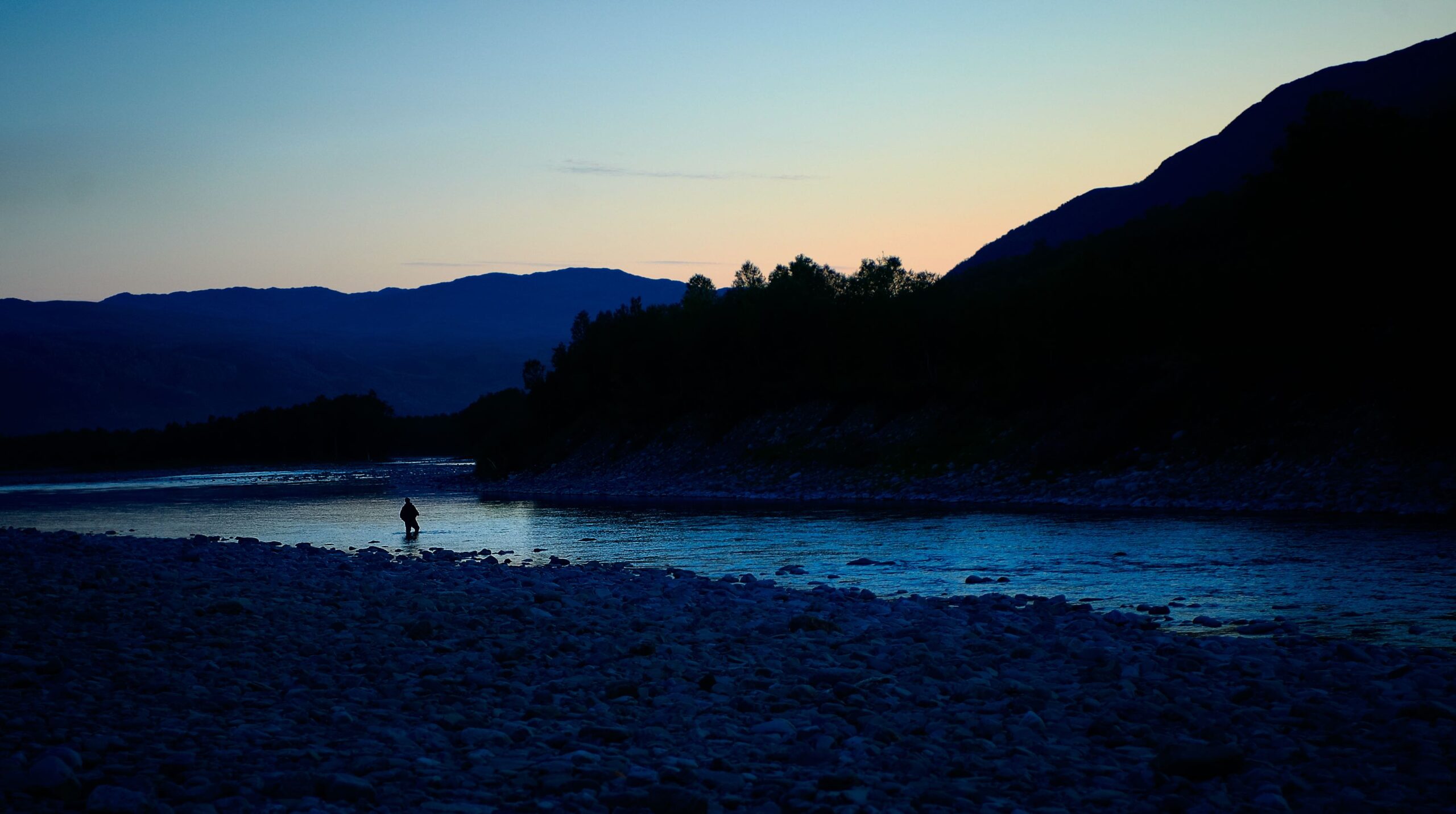
Image: the hot river (21 degrees Celsius = 69,8 Farenheight) in Northern Norway (2011) … 24 hours of light and a clear cold night will bring the river temperature down several degrees and make fishing excellent at night.
Many river owners wisely close rivers for fishing when temperatures exceed 18 degrees as fishing catch & release in too hot a river can be a wrong choice as salmon can have a hard time recovering from stress in warm water; undoubtedly, we will see more restrictions on fishing in summer-warm rivers.
Teach yourself to fish with riffling hitch flies.
Riffling hitch is an effective sport in cold and warm water, and the riffling hitch fly work excellently in shallow rivers where the water depth is 0.25 – 1.5 meters. Rivers in Finmark (region of Northern Norway), such as Repparfjords River, Staburs River and Vestre Jakobs River, are just a few fine examples of Nordic rivers where riffling hitches work exceptionally well. The best flies are often tiny, and it pays to experiment with colour and size if fish show interest but don’t bite – often, it is pretty simple variations that can be decisive.
Learn more about the riffling hitch technique and the tackle to use
The jewel in the crown – Salmon on the dry fly
Seeing a big fish rise from the depths towards your dry fly is the ultimate dream for many fly anglers – but often, this will only be a dream.
Fishing with a dry fly for salmon is a sport within a sport. Many people only become familiar with this form of fishing when the fishing situation by the river has become entirely impossible, and that’s a bit sad because dry fly fishing is at its best when the salmon is fresh and really on the bite – so if you want to try the ultimate fly-fishing challenge then tie a dry fly on your leader when the silver, willing-to-bite salmon is on their way up the river.
When the river runs low, salmon will still arrive daily. Often they will find rest in places unsuitable for conventional wet fly fishing – here and in the areas where you usually would target the salmon, you should fish with a dry fly instead of spending your fishing day trying to catch the same salmon on a wet fly.
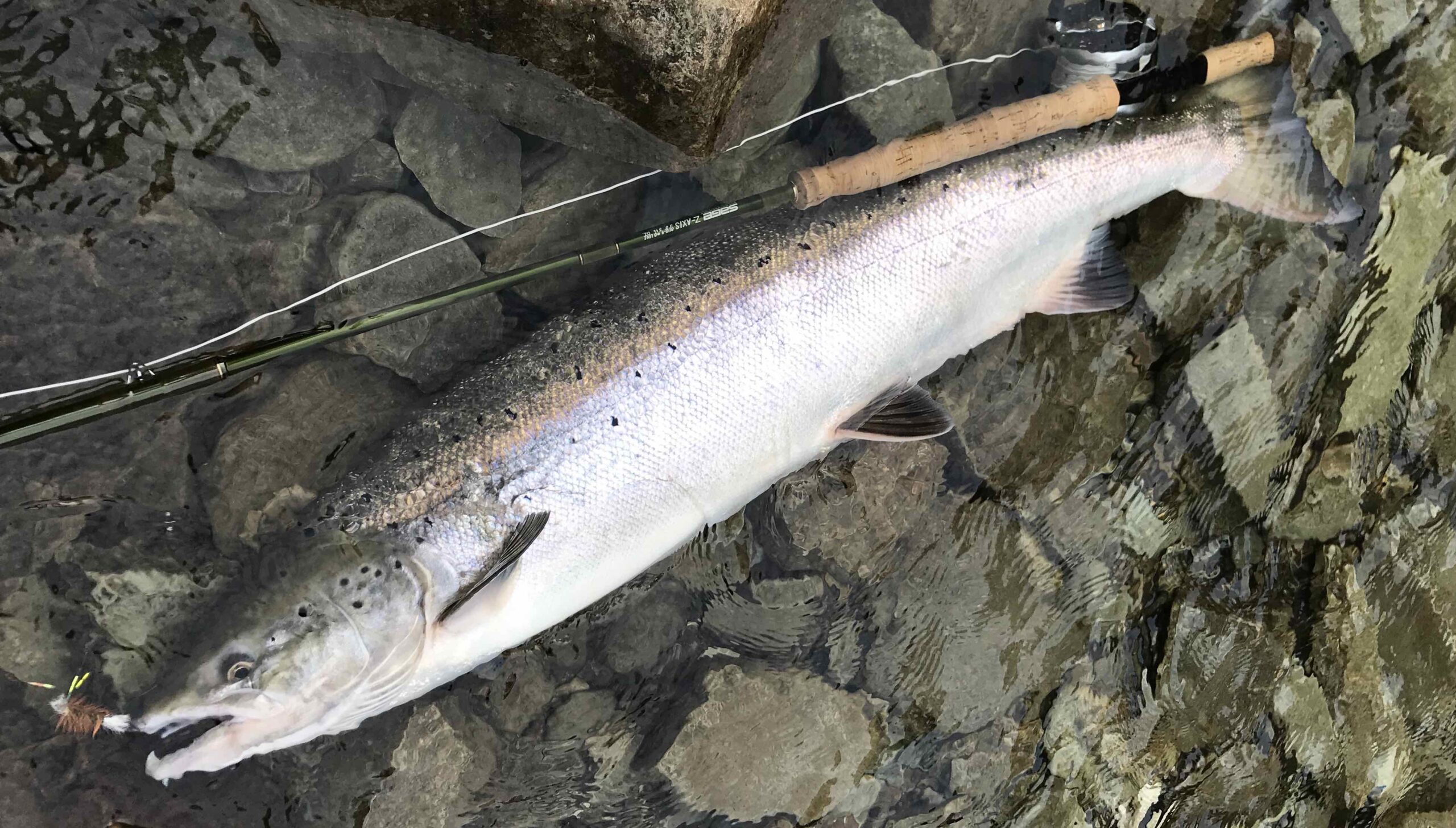
The ultimate fly fishing dream – large salmon on a dry fly – Here, a June salmon has taken a Repparfjord-green Tube Bomber. The hook is an Owner ST # 14 treble hook – The tippet material is Maxima Chameleon 0.25mm.
Read more about how to dead-drift dry flies for Atlantic salmon.
Fishing in the low and warm summer river is a form of fishing that is all about details; often, it is pretty tiny details that can change your fishing day in a positive direction – once you have found these new forms of fishing and techniques, maybe like me you will be looking forward to the days with difficult conditions by the river
Norwegian rivers are great dry-fly rivers.
Norway has some of the best dry fly fishing for salmon on the planet; it might not be the first thing you think of when tying flies for summer fishing, but maybe you should start.
Clear-water rivers from the south to the far north offer great opportunities throughout the season – and we, as anglers, often set limitations in our fishing. I usually explain this by discussing specific salmon I have caught in impossible dry fly conditions.
I caught a salmon several years ago in Orkla. It was raining, the river was high, and only 5 degrees Celsius. I still caught a silver salmon on a smaller white Bomber. There was a snowstorm on another trip to the Repparfjord River in August. The surrounding lowland was white with snow; still, I had a salmon biting after my Repparfjord Green Bomber 4 time.
Don’t forget your dry flies when you leave for Norway.
it is often us as anglers who set limitations in our fishing, and I usually explain this by talking about specific salmon I have caught in the most impossible dry fly conditions.
Climate changes and salmon fishing – Keep up the spirit – think positively.
It is hard to keep up the spirit when river systems and areas where salmon and their relatives live are in dire straits. When giant river systems like the Tana River in Nothern Norway close down for commercial and recreational fishing because of a lack of fish, everyone gets worried, but when Local anglers who have lived for generations at the Tana River tell me about the great river, how in the past they also have seen years with very few fish, and how the locals suffered from starvation due to the lack of salmon runs I know that stocks of Atlantic salmon are fluctuating.
When some river systems are doing very well while the neighbouring river is doing poorly, climate changes make it hard to zoom in and find a solid explanation for such strange events.
One thing is true: the salmonoid species is quite good at adapting to the places where it lives and is widespread across our planet.
Thinking of how trout eggs brought down from European river systems decades ago to southern places like Argentina, Chile, and New Zealand have formed into healthy strains of fish populations in so many river systems (with different spawning cycles) is mind-boggling.
A positive attitude as anglers, fish, and river conservationists must be the best way forward as we try to navigate through new evidence and scientific data that form in the wake of the changing climate on Mother Earth.
Remember to bring your kids and grandkids fishing because it is only by sharing the dreamy and glorious moments at the river and ponds that new generations would want to conserve the fragile world of trout and salmon.

